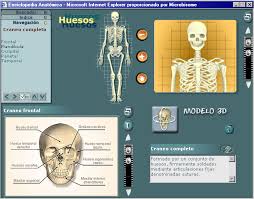Software design in the training of Health Information System professional
Keywords:
Diseño de programas informáticos, software, Programas informáticos.Abstract
Introduction: the National Health Care System, due to its mission, coverage and its features, requires a constant flow of information, aimed at maintaining a high level of knowledge for each of the activities undertaken at all levels, to guide the administration processes of health services, therefore the training of a specialized staff in the use of technologies will allow them to lead and manage the necessary infrastructure for the decision-making processes.
Objective: to analyze the behavior and skills of software design in the teaching-learning process of the subject Software Engineering and Management.
Method: it is a descriptive research, the theoretical methods used were: historical and logical, analysis-synthesis, deduction and induction and systemic approach; from the empirical levels a documentary analysis was applied.
Results: an assessment of the analysis performed concerning regulations and the documents in force of the teaching-learning process for the software to be used as a supplementary means which supports the methodological training of Informatics professors.
Conclusions: the Higher Medical Education in Cuba has reached a qualitative and quantitative progress in all aspects of the teaching process, but there are curricular elements that must be addressed in order to increase in quality.
Downloads
References
1. Vidal Ledo M. Primera Estrategia para la Informatización del Sector de la Salud Pública Cubana [Internet]. La Habana: Editorial de Ciencias Médicas; 2007[citado 7 Ago de 2014]. Disponible en: http://www.bvs.sld.cu/libros/prim_estrategia_inform/indice_p.htm
2. Vidal Ledo M, de Armas Y. Estrategias de informatización del Sector de la Salud (II). Revista Informática Médica. [Internet]. Argentina. Año 3, No. 11. Diciembre 2002. 4:24-7.
3. Ministerio de Salud Pública. Instituto Superior de Ciencias Médicas de la Habana. Carrera de tecnología de la salud. Perfil: Gestión de información en salud. Ciudad de la Habana: MINSAP; 2008.
4. Vidal M, Manrique JE, Rodríguez A, Delgado R. Instituto superior de ciencias médicas de La Habana, Licenciatura de tecnología de la salud. Perfil: gestión de información en salud. Programa de la asignatura¬¬¬¬¬: Ingeniería y Gestión de Software I. La Habana: MINSAP; 2006.
5. Vidal M, Manrique JE, Rodríguez A, Delgado R. Instituto superior de ciencias médicas de la habana licenciatura de tecnología de la salud. Perfil: gestión de información en salud. Programa de la asignatura¬¬¬¬¬: Ingeniería y Gestión de Software II. La Habana: MINSAP; 2006.
6. Pressman RS. Ingeniería de Software: un enfoque práctico [Internet]. 2012 [Citado Oct 23 2014]. Disponible en: http://es.slideshare.net/jdbg16/ingenieria-de-software-un-enfoque-prctico-pressman-5th-ed
7. Vidal Ledo M, Manrique García JE, Rodríguez Díaz A, Delgado Ramos R. Carrera sistemas de información en salud. Programa de la asignatura¬¬¬¬¬: Ingeniería y Gestión de Software. La Habana: MINSAP; 2010.
8. Ministerio de salud pública. Universidad de Ciencias Médicas de La Habana. Currículo de la carrera de licenciatura en sistemas de información en salud. Ciudad de la Habana: MINSAP; 2010.
9. Vidal M. Carrera sistemas de información en salud. Programa principal de la disciplina. Sistemas de información en salud. La Habana: MINSAP; 2011.
10. Linares M; Cruz D, González N, et al. El diseño de software desde la asignatura Ingeniería de Software en la formación del profesional de Licenciatura en Tecnología de la Salud en la especialidad de Sistemas de Información en Salud. Convención Internacional de Salud [internet] 2015 [citado 2015 Oct 23]. Disponible en : http://www.google.com.cu/url?sa=t&rct=j&q=&esrc=s&source=web&cd=1&ved=0ahUKEwjll_Ti27bMAhXINj4KHbYUCNkQFggfMAA&url=http%3A%2F%2Fwww.convencionsalud2015.sld.cu%2Findex.php%2Fconvencionsalud%2F2015%2Fpaper%2Fdownload%2F665%2F409&usg=AFQjCNH4NT08H_Oj3outdcOE3GeMILhddw&bvm=bv.121070826,d.cWw&cad=rja

Published
How to Cite
Issue
Section
License
Authors who have publications with this journal agree to the following terms: Authors will retain their copyrights and grant the journal the right of first publication of their work, which will be publication of their work, which will be simultaneously subject to the Creative Commons Attribution License (CC-BY-NC 4.0) that allows third parties to share the work as long as its author and first publication in this journal are indicated.
Authors may adopt other non-exclusive license agreements for distribution of the published version of the work (e.g.: deposit it in an institutional telematic archive or publish it in a volume). Likewise, and according to the recommendations of the Medical Sciences Editorial (ECIMED), authors must declare in each article their contribution according to the CRediT taxonomy (contributor roles). This taxonomy includes 14 roles, which can be used to represent the tasks typically performed by contributors in scientific academic production. It should be consulted in monograph) whenever initial publication in this journal is indicated. Authors are allowed and encouraged to disseminate their work through the Internet (e.g., in institutional telematic archives or on their web page) before and during the submission process, which may produce interesting exchanges and increase citations of the published work. (See The effect of open access). https://casrai.org/credit/


